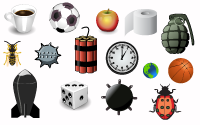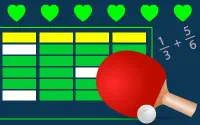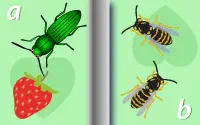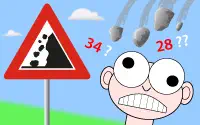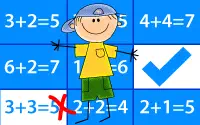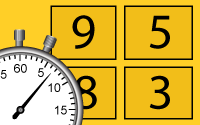


Polarity, strength of correlation
for 8th grade
Identify the polarity and strength of any linear correlation for each of the given scatter graphs
Home / 8th grade / Statistics / Two variables / Polarity, strength of correlation
Polarity and strength of correlation for scatter graphs
Scatter graphs use dots or diagonal crosses to represent values that correlate the relationship between two variables. The scatter graph will indicate the degree to which the two variables are correlated (linked or related).
For instance, a scatter graph plotting altitude (x-axis) against Oxygen concentration (y-axis) will indicate a strong correlation between these two variables because Oxygen concentration reduces with altitude (the reason climbers can suffer from altitude sickness). On the other hand, a scatter graph plotting eye colour against exam results will show no correlation because these two variables have no causal relationship.
The polarity of a correlation can be characterised as "positive" or "negative". This indicates whether an imaginary straight line drawn through the points (a line of best fit) rises to the right (positive - as the x-axis variable increases, so does the variable on the y-axis) or falls to the right (negative - as the x-axis value increases, the y-axis variable decreases). So, thinking about our example of altitude plotted against Oxygen concentration, we will see a negative correlation because the concentration decreases as the altitude increases. A positive correlation would be seen if we plotted a child's age against shoe size: as their age increases, so does their shoe size.
The strength of a correlation can be characterised as "strong" or "weak". A strong correlation will be indicated on a scatter graph by points that closely follow a line of best fit. A weak correlation will show points that are more loosely concentrated around a line of best fit.
In this topic you are asked to decide which of the descriptions provided best describe the correlation between the variables plotted on the x and y axes. The possible options are:
- Strong positive correlation
- Strong negative correlation
- Weak positive correlation
- Weak negative correlation
- No correlation
Below is a table showing the first 7 question answer pairs for the topic "Polarity, strength of correlation" as used in the lessons for this topic. Our games and tests for the topic use these 7 items plus 9 additional question answer pairs.
The topic "Polarity, strength of correlation" is in the category Statistics for 8th grade (ages 13 to 14).
Revise 'Polarity, strength of correlation' with one of our games for 8th grade
Home / 8th grade / Statistics / Two variables / Polarity, strength of correlation
Each of our math topics for secondary are made up of between 6 and 20 question and answer pairs (both the written form and a robot voice speaking those questions and answers). Each topic can be used with all the activities on the site.
Number * Algebra * Ratio proportion rate * Geometry & measures * Probability * Statistics *

